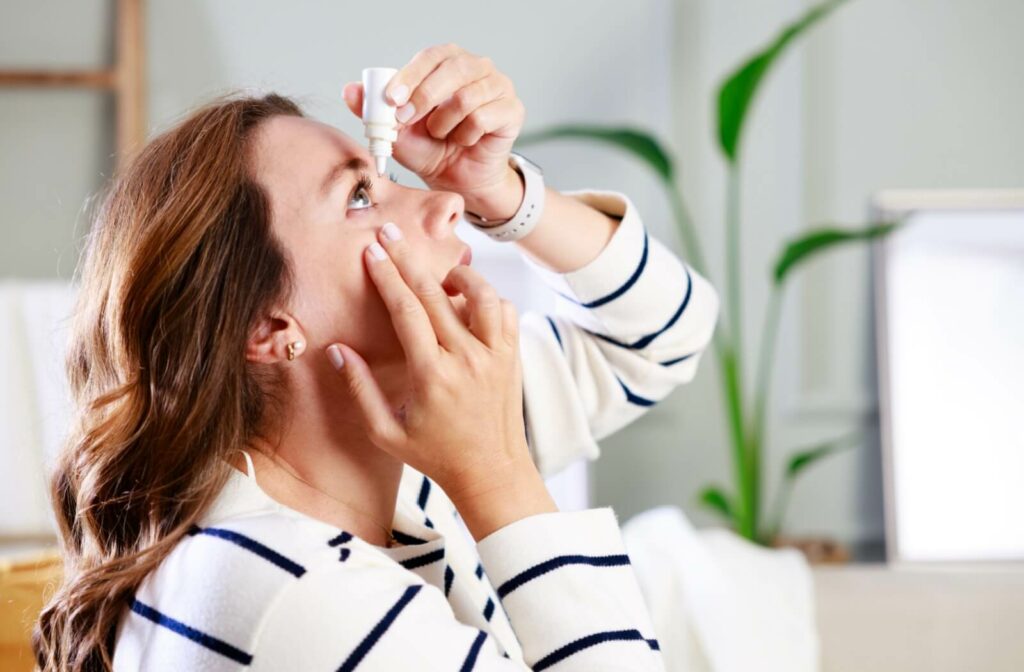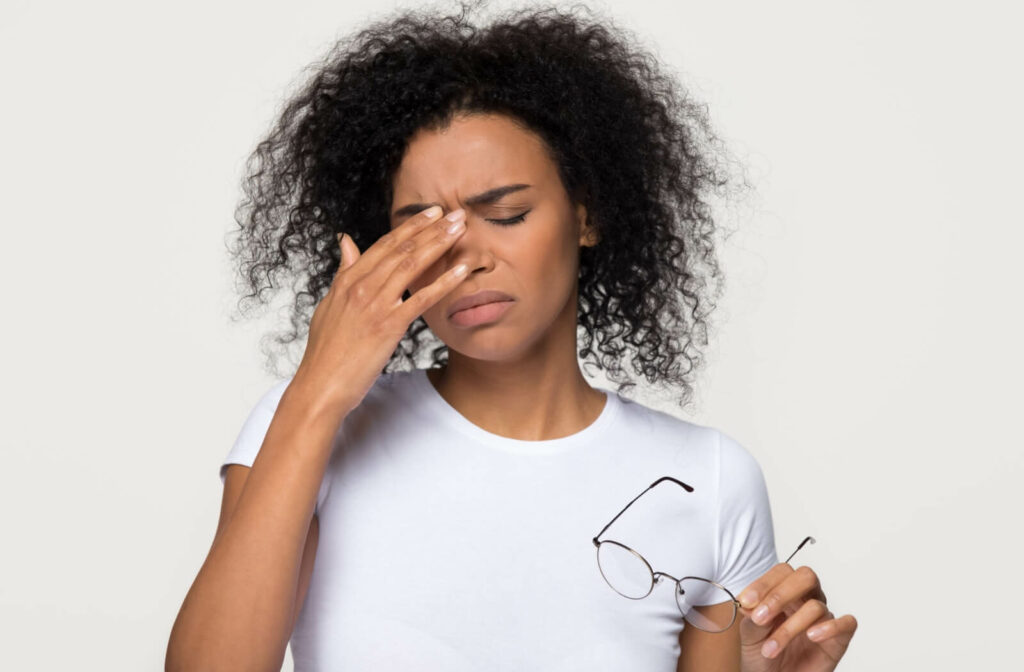Dry eye is extremely frustrating. This common eye condition is easily recognizable by a constant stinging sensation—it’s like a piece of sand trapped against the eye’s surface. However, it’s not a short-term problem and can have lasting effects if left untreated.
While dry eye doesn’t directly cause blindness, it can cause permanent vision damage. It leaves the eye unprotected and raises the risk of infections or scratches—both of which can cause blindness if you aren’t careful. If you experience dry eyes, visit your optometrist to discuss dry eye therapy and find relief.
What Is Dry Eye?
Dry eye is a condition that develops due to an imbalance in your tears. Either the eye doesn’t produce the right amount of tears, or any tears created evaporate far too quickly.
Tears aren’t just for crying—they’re part of keeping your eyes healthy and comfortable. Without them, your eyes can feel gritty, irritated, or downright uncomfortable. They flush away bacteria, dirt, debris, allergens, and any other particles that can protect the eye.
To properly function, this film needs a mix of oil, water, and mucus. This can be thrown off by an imbalance in the production of these components. And when this balance is disrupted, discomfort quickly follows.
What Causes Dry Eye?
One common cause of dry eye is a problem with the oil-producing glands in your eyelids. The oils they produce are responsible for preventing tear evaporation. If these glands can’t send enough oils to the tear film, the film evaporates and leaves the eye exposed. This condition, called meibomian gland dysfunction, quickly causes dryness and irritation.
However, dry eye doesn’t often have a single cause. It’s often linked to natural changes like aging or shifts in hormones, but that’s not the whole picture. Your environment and overall health contribute as well.
Some common causes of dry eye include:
- Aging
- Hormonal changes
- Autoimmune diseases
- Medications
By identifying these triggers, it’s easier to find ways to reduce your risk. So how do you recognize dry eye?
Dry Eye: The Common Signs & Symptoms
Dry eye symptoms can range from mildly irritating to extremely frustrating. It’s like a constant, never-ending stinging sensation on the eye’s surface—this leads to irritation, discomfort, and even excessive tearing. However, since the tears themselves aren’t protecting the eye, this response rarely helps.
Some other common symptoms of dry eye include:
- Redness
- Irritation
- Dryness
- Stinging
- Sensitivity to light
- Blurred vision
Mild dryness is often manageable, but it can quickly escalate. Even the mild symptoms are persistent, frustrating, and detrimental.
If you’re in a windy or dry area, you’ll likely notice your symptoms worsen when exposed to outside air. Meanwhile, other symptoms may fluctuate from day to day, or even just when switching from one environment to the other.
The Long-Term Risk Of Dry Eye
When left untreated, dry eye can leave your eyes exposed and vulnerable to potential risks. Remember, your tears don’t just give moisture—they flush out dirt and bacteria to protect the eye. Without enough tears, your eyes aren’t properly protected.
This eventually makes your eye work harder to remove irritants and harmful particles. Chronic dry eye increases the risk of:
- Corneal abrasions or ulcers
- Increased risk of serious eye infections
- Permanent damage to the cornea in severe cases
If you aren’t able to remove bacteria and debris, you’re even at risk of permanent vision damage. It’s essential to visit an optometrist if you notice persistent symptoms of dry eye. Treating dry eye reduces these risks and restores clear, comfortable vision—just like you deserve.
Can An Optometrist Treat Dry Eye?
Optometrists play a key role in managing dry eye. From the moment you walk in, our team will work to help you find relief. This approach, called dry eye therapy, is a great way to address your problem.

First, we’ll assess your symptoms and examine your eyes. This lets us figure out what’s causing your symptoms and dryness. Then, we’ll create a personal treatment plan to help reduce these symptoms.
While some cases can be treated with specialty eye drops, others require a more advanced approach. Meanwhile, you may even benefit from oral medication or certain lifestyle changes. Supplements can help restore the balance to your tear film, while making adjustments to your at-home environment makes things easier for your eyes.
At The Vision Place, we know how a specific plan can make all the difference. Our focus is on finding what works for you so you can maintain your vision and comfort.
Let Our Team Help You Find Relief
When it comes to dry eye, early treatment makes a difference. We know how important it is to find relief, and our team is here to help you. With our assistance, relief from dry eyes is within reach, so reach out to us today! Book an appointment with us—it’s the first step towards comfortable vision once more.


